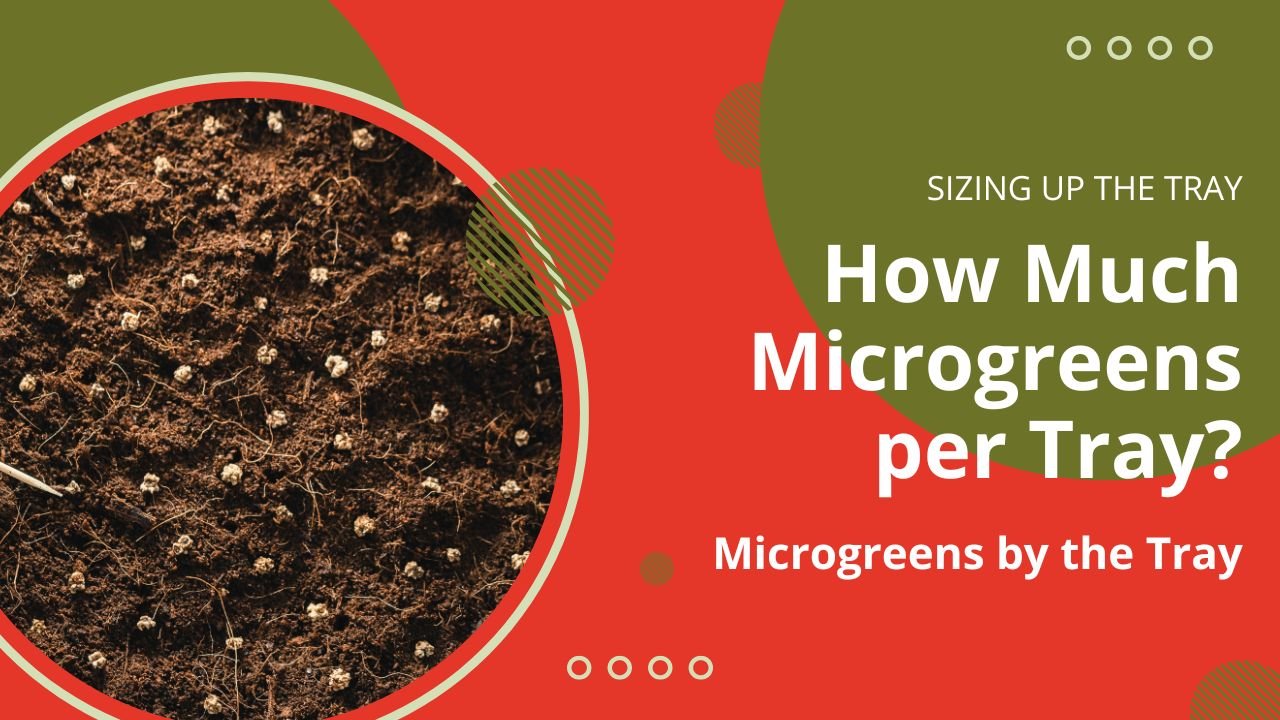Microgreens have gained immense popularity in recent years due to their vibrant colors, delicate flavors, and impressive nutritional profiles. As a result, many individuals have started cultivating these miniature greens as a potential business venture. However, in order to successfully sell microgreens, proper packaging plays a crucial role in ensuring product freshness, attractiveness, and customer satisfaction.
Benefits of packaging microgreens
Packaging microgreens offers several benefits that can positively impact both producers and customers. Here are four key advantages of packaging microgreens:
- Increased Shelf Life: Proper packaging helps extend the shelf life of microgreens by providing protection against external elements such as moisture, light, and air. By keeping the greens fresh for a longer period, packaging allows producers to store and transport the product more efficiently, reducing the risk of spoilage and waste.
- Improved Appearance: Packaging plays a vital role in preserving the visual appeal of microgreens. It helps maintain their vibrant colors, crisp textures, and delicate structures. With attractive packaging, microgreens can be presented in an appealing and professional manner, enhancing their marketability and increasing the likelihood of attracting customers.
- Reduced Food Waste: Packaging microgreens in appropriate containers or bags helps minimize damage during transportation and handling. It prevents crushing, bruising, or wilting, which can lead to the loss of product quality and increased food waste. By protecting the delicate greens, packaging contributes to reducing waste at various stages of the supply chain.
- Increased Customer Satisfaction: Well-packaged microgreens provide customers with a positive experience. Clear and informative packaging allows customers to see the product they are purchasing, assess its freshness, and make informed decisions. Packaging that includes labeling with details like harvest dates, nutritional information, and certifications can enhance transparency and trust. Satisfied customers are more likely to become repeat buyers and recommend the product to others, leading to increased sales and brand loyalty.
In summary, packaging microgreens offers benefits such as increased shelf life, improved appearance, reduced food waste, and increased customer satisfaction. By investing in appropriate packaging solutions, microgreen producers can enhance the overall quality of their product and create a positive impression in the market.
Read Here: Preserving the Freshness: The Ultimate Guide to Storing Microgreens
Different packaging options for microgreens
Here are four different packaging options for microgreens, along with their pros and cons:
Plastic Clamshells:
Pros:
- Transparent packaging allows customers to see the product.
- Provides good protection against moisture and physical damage.
- Lightweight and stackable, making them easy to store and transport.
- Can be resealable, allowing customers to consume the microgreens gradually.
Cons:
- Plastic is not environmentally friendly and contributes to plastic waste.
- May not provide optimal airflow, leading to potential condensation and reduced shelf life.
- Relatively higher cost compared to some other packaging options.
Paper Trays:
Pros:
- Eco-friendly and biodegradable option.
- Can be made from recycled materials, reducing environmental impact.
- Provides decent protection against physical damage.
- Allows for better airflow, which can help extend the shelf life of microgreens.
Cons:
- Not transparent, so customers cannot visually inspect the microgreens.
- May not be as sturdy as plastic clamshells, making them more susceptible to damage during transportation.
- Limited options for resealability.
Mason Jars:
Pros:
- Offer a rustic and visually appealing presentation.
- Can be reused by customers for storage purposes, adding value and reducing waste.
- Provide good protection against physical damage.
- Suitable for local or direct sales where packaging appearance is less important.
Cons:
- Limited transparency, so customers cannot see the microgreens.
- Relatively heavier and bulkier, making them less practical for large-scale transportation.
- Require additional labeling for essential information.
Bulk Bins:
Pros:
- Minimize packaging waste and environmental impact.
- Customers can choose the desired quantity, reducing the potential for food waste.
- Cost-effective option for customers who purchase in larger quantities.
- Can be used for self-service models or farmers’ markets.
Cons:
- Lack of individual packaging can lead to potential contamination or cross-contamination.
- Microgreens may lose their visual appeal if handled roughly in bulk bins.
- Limited protection against moisture and physical damage.
- May require additional efforts to maintain hygiene and cleanliness.
It’s important to choose a packaging option that aligns with your specific business goals, target market, and sustainability values. Consider factors such as product protection, customer preferences, cost, and environmental impact when selecting the packaging option for your microgreens.
How to choose the right packaging for your microgreens
Choosing the right packaging for your microgreens involves considering several key factors. Here are three important aspects to keep in mind:
- Consider Your Target Market: Understanding your target market is essential for selecting the appropriate packaging. Consider the preferences and expectations of your customers. Are they health-conscious individuals who prioritize sustainability? Are they chefs or restaurants who value presentation? If your target market values eco-friendly options, you might opt for biodegradable or compostable packaging. If visual appeal is important, transparent packaging like plastic clamshells may be more suitable. By aligning your packaging with your target market’s preferences, you can enhance customer satisfaction and attract the right audience.
- Consider Your Budget: Packaging costs can vary significantly, so it’s crucial to evaluate your budget constraints. Balancing quality and affordability is key. Explore different packaging options, compare prices, and consider the cost per unit. While investing in high-quality packaging can improve product presentation and shelf life, it should also be financially viable for your business. Look for cost-effective solutions that meet your requirements without compromising the quality and integrity of your microgreens.
- Consider the Type of Microgreens You Are Growing: Different types of microgreens have unique characteristics and requirements. Some microgreens are delicate and require packaging that offers protection against physical damage and moisture. Others may be more robust and can tolerate less protective packaging. Assess the specific needs of the microgreens you are growing and choose packaging that accommodates their characteristics. For example, if your microgreens are prone to wilting, packaging with good airflow and moisture control may be necessary. Understanding the specific requirements of your microgreens will help you select packaging that maintains their quality and extends their shelf life.
By considering your target market, budget, and the specific needs of your microgreens, you can make an informed decision when choosing the right packaging. Remember to prioritize product protection, customer satisfaction, cost-effectiveness, and sustainability to create a packaging solution that enhances the overall value of your microgreens.
How to package microgreens for shipping
When packaging microgreens for shipping, it’s important to ensure that they arrive at their destination in optimal condition. Here are three key steps to follow:
- Choose the Right Size and Type of Packaging: Select packaging that is appropriate for the quantity and size of your microgreens. Consider using plastic clamshells, paper trays, or similar containers that provide a secure and protective environment. The packaging should be sturdy enough to withstand the shipping process and prevent crushing or damage. Ensure that the packaging is also leak-proof, especially if your microgreens have high moisture content.
- Use Cushioning Material to Protect the Microgreens: Place cushioning material, such as food-grade tissue paper or biodegradable packing peanuts, inside the packaging to provide a protective layer for the microgreens. This helps prevent them from shifting or getting crushed during transportation. The cushioning material should be sufficient to absorb any impact and keep the microgreens secure.
- Label the Package with the Correct Information: Clearly label the package with the necessary information. Include details such as the type of microgreens, the harvest date, and any special handling instructions. This ensures that the recipient knows what they are receiving and how to handle the package properly. If your microgreens are organic or have specific certifications, include the relevant labels or logos to convey that information.
Additionally, consider adding a “Fragile” or “Perishable” label to the package to alert the shipping carriers and handlers about the delicate nature of the contents. This can help minimize rough handling during transit.
Before sealing the package, double-check that it is securely closed to prevent any spillage or exposure of the microgreens. Consider using tape or seals to ensure the package remains intact during the shipping process.
By following these steps and paying attention to packaging, cushioning, and labeling, you can help ensure that your microgreens are properly protected and maintain their freshness and quality during shipping.
Conclusion
In conclusion, packaging microgreens offers several benefits, including increased shelf life, improved appearance, reduced food waste, and increased customer satisfaction. Proper packaging protects the microgreens, enhances their visual appeal, minimizes waste, and ensures customer satisfaction.
When choosing the right packaging for your microgreens, consider your target market, budget constraints, and the specific needs of your microgreens. Align the packaging with your customers’ preferences and values, while also balancing affordability and quality. Packaging should meet the requirements of your microgreens, providing protection, airflow, and moisture control as needed.
When packaging microgreens for shipping, ensure you choose the appropriate size and type of packaging that can withstand the shipping process. Use cushioning material to protect the microgreens from damage during transit, and label the package with the correct information, including the type of microgreens and any handling instructions. Consider adding a “Fragile” or “Perishable” label to alert handlers to the delicate nature of the contents.
By considering these tips, you can effectively package your microgreens, meet customer expectations, and ensure the freshness and quality of your product throughout transportation and delivery. Proper packaging contributes to the success of your microgreens business by protecting the product and creating a positive experience for customers.



